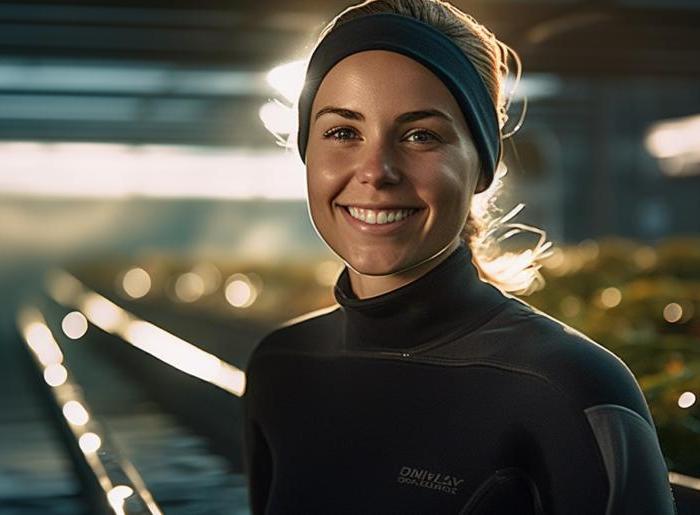

Aquaculture has become a thriving industry in Australia, and Offshore Aquaculturists play a vital role in meeting the demand for seafood. However, the success of these aquaculturists heavily relies on having the right equipment and technology. This is where equipment finance comes into play. Equipment finance is a financial solution designed to help businesses acquire the necessary equipment and machinery without upfront costs. For Offshore Aquaculturists in Australia, having access to the right equipment can be essential for maintaining efficient operations and maximising productivity. In the dynamic and challenging world of aquaculture, staying ahead of the competition requires investing in state-of-the-art equipment. Whether it's advanced feeding systems, water treatment technologies, or specialised harvesting tools, having access to modern equipment can significantly enhance yield and reduce operational costs. Business equipment finance provides Offshore Aquaculturists with the opportunity to acquire the latest equipment without depleting their working capital. By spreading the cost of the equipment over a predetermined period, aquaculturists can better manage their cash flow and allocate funds to other important aspects of their operations. An equipment finance calculator can be a valuable tool for aquaculturists to estimate the monthly repayments and determine the financial viability of acquiring specific equipment. This can help them make informed decisions and choose the financing option that best suits their budget and business requirements. In the following sections, we will delve deeper into the various financing options available for Offshore Aquaculturists, explore the benefits of equipment finance, and provide valuable insights into the application process. So, let's dive in and discover how equipment finance can catapult your aquaculture business to new heights.
Compare over 40+ lenders with one application.
Equipment finance is a financing solution tailored specifically for Offshore Aquaculturists in Australia to acquire the necessary equipment and machinery for their operations. It offers a convenient and flexible approach to obtaining the equipment needed to run a successful aquaculture business. Equipment finance allows aquaculturists to access a wide range of equipment essential for offshore operations, such as feeding systems, netting, cages, water treatment facilities, and harvesting equipment. By utilising equipment finance, aquaculturists can overcome the financial barriers that often come with purchasing expensive equipment upfront. The process of equipment finance involves the aquaculturist identifying the specific equipment required to enhance their operations. They work with equipment finance providers who have expertise in the aquaculture industry to assess the equipment's value and determine an appropriate leasing or financing structure. The terms and conditions of the equipment finance agreement are then established, including the repayment period, interest rates, and any applicable fees. Aquaculturists have the opportunity to select a financing option that aligns with their budget and business objectives. Through equipment finance, aquaculturists also have the flexibility to upgrade or replace equipment as needed. This allows them to adapt to changing technologies or industry requirements without the burden of upfront costs. Overall, equipment finance provides Offshore Aquaculturists in Australia with a practical and accessible solution to acquire necessary equipment without significant upfront expenses. It helps ensure their operations can thrive and contribute to the growth and sustainability of the aquaculture industry
Learn about eligibility and how to apply.
Offshore Aquaculturists can acquire essential equipment with equipment finance, including netting for containment, aquaculture tanks for controlled environments, and feeding systems for efficient distribution. These tools enable optimal growth and health of fish populations while ensuring a productive and sustainable aquaculture operation.
Here are some common types of equipment Offshore Aquaculturists can purchase with equipment finance:
Netting
Netting is an essential equipment for Offshore Aquaculturists as it acts as a barrier to contain and protect fish within designated areas.
Aquaculture Tanks
These tanks are designed specifically for aquaculture purposes and provide a controlled environment for fish and other aquatic organisms to grow.
Feeding Systems
Automatic feeding systems help Offshore Aquaculturists efficiently distribute feed to their fish populations, ensuring optimal nutrition and growth.
Water Treatment Facilities
Effective water treatment facilities help maintain the quality and cleanliness of the water, creating a healthy environment for fish and minimising the risk of diseases.
Cages and Pens
Offshore Aquaculturists can utilise cages and pens to contain fish in designated areas, providing a safe and controlled environment for their growth.
Harvesting Equipment
Equipment such as fish pumps and grading machines are crucial for efficiently harvesting fish without causing stress or harm to the aquatic organisms.
Monitoring Systems
Monitoring systems, including sensors and underwater cameras, allow aquaculturists to constantly monitor factors such as water quality, temperature, and fish behaviour.
Aeration Systems
Aeration systems help oxygenate the water, ensuring that fish have an adequate supply of oxygen to support their growth and overall health.
Boats and Vessels
Aquaculturists require boats or vessels for various tasks such as transport, maintenance, and monitoring of offshore aquaculture sites.
Storage and Processing Equipment
Aquaculturists often require storage facilities and processing equipment to handle and preserve harvested fish before distribution.
Equipment finance provides Offshore Aquaculturists with opportunities for growth by allowing them to expand operations, upgrade technology, diversify species, improve water quality management, enhance harvesting techniques, invest in feed systems, expand hatcheries, implement health and biosecurity measures, upgrade transport equipment, and invest in research and development.
Here are some common reasons Offshore Aquaculturists use equipment finance for growth:
Expansion of Operations
Equipment finance allows Offshore Aquaculturists to acquire the necessary equipment to expand their operations, increase production capacity, and tap into new markets.
Technology Upgrades
Aquaculturists can use equipment finance to upgrade their technology, such as advanced monitoring systems and automation tools, to improve operational efficiency and maximise productivity.
Diversification of Species
With equipment finance, aquaculturists can obtain equipment needed to diversify their aquaculture species, allowing them to cater to new markets and potentially increase profitability.
Improved Water Quality Management
Funding provided through equipment finance can be used to invest in advanced water treatment facilities, filtration systems, and aeration equipment, enabling aquaculturists to maintain optimal water quality for their fish stocks.
Enhanced Harvesting Techniques
Offshore Aquaculturists can utilise equipment finance to acquire specialised harvesting equipment and techniques, ensuring efficient and sustainable fish extraction processes.
Investment in Feed Systems
Equipment finance enables aquaculturists to invest in advanced feeding systems, such as automatic feeders and computer-controlled distribution mechanisms, to optimise feed usage and reduce waste.
Expansion of Hatcheries
Funding obtained through equipment finance can support the expansion of aquaculture hatcheries, allowing Offshore Aquaculturists to increase their breeding capacity and improve the overall growth and survival rates of fish.
Improved Health and Biosecurity Measures
Equipment finance facilitates the acquisition of equipment for biosecurity protocols, disease monitoring, and fish health management, helping aquaculturists maintain a healthy and disease-free environment.
Upgrading Transport and Logistic Equipment
With equipment finance, Offshore Aquaculturists can upgrade their boats, vessels, and transport equipment, improving efficiency and reducing downtime during the transport of harvested fish.
Investment in Research and Development
Aquaculturists can utilise equipment finance to invest in research and development of innovative techniques and technologies, fostering continuous improvement and sustainable growth in the industry.
Calculate your repayment estimates and more.
Equipment finance for Offshore Aquaculturists in Australia brings several advantages, enabling them to secure the necessary equipment for their operations. Here are some of the advantages:
Aquaculture Systems
Aquaculturists rely on advanced and specialised aquaculture systems to efficiently cultivate and harvest aquatic organisms. Equipment finance enables them to acquire these systems, such as recirculating aquaculture systems (RAS), fish cages, and feeders. These systems optimise water circulation, improve feeding efficiency, and provide a controlled environment for healthy and sustainable aquaculture operations.
Harvesting and Processing Equipment
Efficient harvesting and processing equipment are essential for Offshore Aquaculturists to maintain the quality and freshness of their seafood products. Equipment finance facilitates the acquisition of equipment like fish grinders, sorting machines, and vacuum sealers. With these tools, aquaculturists can streamline the harvesting process, ensure product integrity, and meet the industry's strict quality standards.
Vessel and Transportation Equipment
Offshore Aquaculturists often require vessels and transport equipment to move their stock from the offshore sites to the processing facilities or market. Equipment finance allows them to lease or purchase specialised transport vessels, such as wellboats or live fish carriers, that are equipped with state-of-the-art water treatment systems and storage facilities. These vessels ensure the safe transport of live seafood, minimising stress and maintaining optimal water conditions.
Monitoring and Control Systems
To monitor and control various aspects of offshore aquaculture operations, advanced systems like remote-controlled underwater cameras, sensors, and real-time data analysis tools are crucial. Equipment finance enables aquaculturists to invest in these technologies, ensuring effective monitoring of water quality, stock health, and feeding management. These systems provide valuable insights, optimise operational efficiency, and enable early detection of any issues that may arise in the aquaculture environment.
When considering equipment finance for Offshore Aquaculturists in Australia, it's important to be mindful of a few considerations. Here are a few potential disadvantages to think about:
Financial Commitment
Equipment finance requires ongoing financial commitments in the form of regular payments or leasing fees. Aquaculturists need to consider the impact these financial obligations may have on their cash flow and overall budget. It is important to carefully assess the financial feasibility and long-term sustainability before entering into an equipment finance agreement.
Depreciation
Over time, equipment used in offshore aquaculture may experience wear and tear or become outdated due to advancements in technology. Aquaculturists must be mindful of the depreciation of their financed equipment and consider the potential costs associated with maintenance, repairs, and eventual replacement.
Limited Flexibility
Equipment finance agreements often come with specific terms and conditions that may limit the flexibility of aquaculturists to make changes or upgrade their equipment. It is important to carefully review the agreement to ensure it aligns with future business goals and allows for flexibility in production processes.
Risk of Obsolescence
As technology continues to evolve rapidly, there is a risk that the equipment financed by Offshore Aquaculturists may become obsolete before the end of the financing term. Aquaculturists should consider this potential risk and evaluate the flexibility of the finance agreement to adapt to changing technology or industry trends. Regular reassessment and planning can help mitigate the risk of equipment obsolescence.
Offshore Aquaculturists have several alternatives to equipment finance, including business loans, equipment leasing, government grants and subsidies, and equipment rental. These alternatives provide flexibility in acquiring the necessary equipment without the need for significant upfront investments. It is important to evaluate each option based on specific needs and long-term goals.
Here are some common alternatives to equipment finance:
Business Loans
Aquaculturists can explore traditional business loans offered by financial institutions. These loans provide a lump sum of money that can be used to purchase equipment. With competitive interest rates and flexible repayment terms, business loans offer aquaculturists the freedom to choose equipment that best suits their needs.
Equipment Leasing
Rather than purchasing equipment outright, aquaculturists can consider equipment leasing. Leasing allows businesses to use equipment for a specific period in exchange for regular payments. This option provides flexibility and often includes maintenance and upgrade options, reducing the financial burden of equipment ownership.
Government Grants and Subsidies
Government bodies offer grants and subsidies to support the growth of various industries, including aquaculture. Offshore aquaculturists can explore grant programmes and subsidies that specifically target equipment investment. These financial incentives can significantly reduce the upfront costs of acquiring equipment.
Equipment Rental
Instead of committing to long-term financing options, aquaculturists can opt for equipment rental. This allows them to access the necessary equipment without the need for a significant upfront investment. Rental agreements typically offer flexibility in terms of equipment type, rental duration, and maintenance support.
To estimate your monthly repayments and the total cost of the loan, input the loan amount, loan term and interest rate into the calculator below. This helps you plan your budget and choose the most suitable loan terms.
These helpful FAQs will help you find the answers you need. If you can't find what you're looking for, you can request a callback below.